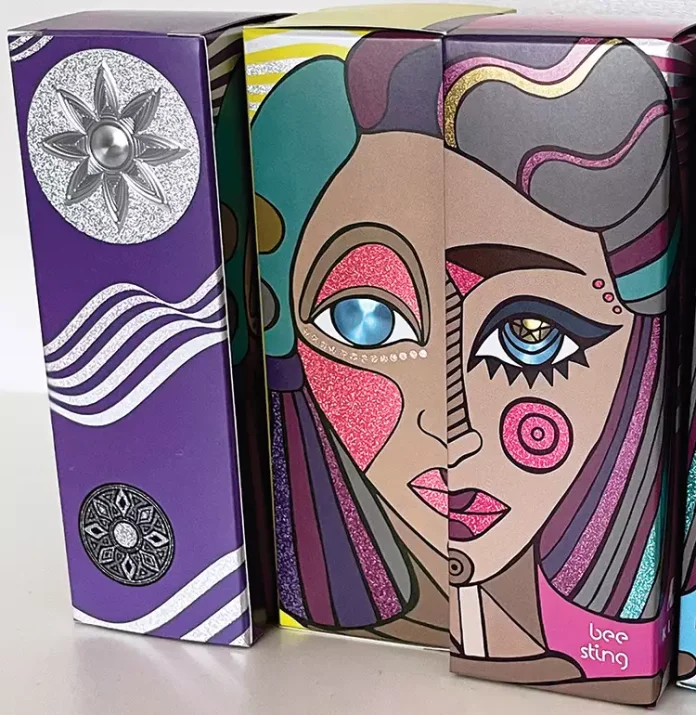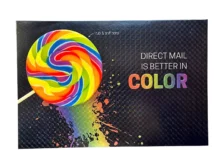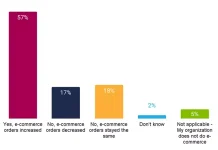By Jeff Peterson, executive director, FSEA
The application of cold foil for labels, folding cartons and other printed materials has been available for some time. However, in recent years, there has been an acceleration in the acceptance and use of cold foil in both roll-to-roll and sheet-fed applications. PostPress magazine sat down with Michael Rivera, general manager – Cold Foil Business Unit, K Laser Technology, and Mike King, president, Eagle Systems, to discuss frequently asked questions as they pertain to cold foil transfer.
Cold foil continues to grow in popularity for labels and folding cartons. What are some of the reasons that cold foil has become more popular in recent years?
Rivera: For many applications, the process of cold foiling can be more cost effective vs. hot foil because it can be completed all inline, which has afforded more printers access to adding metallic decorating to its line of services. Overall, there is less set-up time and less costly for many applications.
King: One of the key reasons that cold foil has become more popular is that the quality and shine is now equal to, or in some cases, surpassed that of a hot foil stamp. Other reasons for its popularity include the efficiency of the cold foil transfer and the fast-to-market ability of the process. The cost savings can be as much as 80% vs. other processes depending on the application.
What are some of the advantages of using cold foil vs. other metallic decorating choices?
Rivera: Cold foil offers a more appealing, vibrant brilliance versus metallic inks, thus catching the consumer’s eye much quicker. Furthermore, more brand owners and designers are learning more about cold foil and how it can add real value to their designs at a reasonable cost.
King: Cold foil offers flexibility including the ability to be performed inline with the printing, and when applied in the first station of an offset press, the foil can be overprinted inline to create a variety of metallic colors. Cold foil also offers amazing detail, including applying half tones with the cold foil process. This is not obtainable with hot or digital foil processes.
Also, a huge advantage of cold foil versus overprinting a foil laminated or transfer foil board is that areas on a carton or other printed materials that have small type on a white background can be “knocked out” when the cold foil is applied. This eliminates the need to have a separate station on the printing press to apply a white opaque ink, which can be difficult to work with and adds costs to the project.
When is hot foil a more practical choice than cold foil? What are some of cold foil’s limitations?
Rivera: Cold foil excels at short-run work, especially with label applications. However, one disadvantage of cold foil is limitations with paper stocks.
King: For sheet-fed applications on a large sheet, hot foil is more efficient if the metallic image of a folding carton or other printed material is in a small specific area. In addition, if the customer if wanting to emboss or deboss the image or take the grain of the paper out in the foil stamped area, then hot foil is a better choice. If the run lengths are long, cold foil inline with the printing and then embossing or debossing with the diecutting still may be the most efficient choice. Run length, image size, and if the image is embossed/debossed will have an impact on the final decision of hot versus cold.
What new applications have been seen for cold foil? What has sparked the use of cold foil in these applications?
Rivera: We have seen cold foil becoming more popular for wider web applications. This includes labels, smaller-sized folding cartons and especially shrink sleeve applications in the beverage market. The ability to run a wider web for roll-to-roll applications can increase overall throughput and save costs for larger runs.
King: Brand owners are always looking for something new and different. Something that we have seen lately is using cold foil on the inside of a carton to create a high-end look to the entire box. They cold foil the entire uncoated inside of the carton and commonly with an overprinted color over silver foil, giving the inside a truly unique look.
Are there any new technologies with the cold foil process that has been introduced lately or will be available in the near future?
Rivera: Sustainability has become a huge topic for packaging and printing. Transfer cold foil paperboard has become a popular choice versus laminated foil board. Transfer cold foil paperboard will most likely continue to become a popular choice for printers who are concerned with sustainability and recyclability. Another new technology is using digital print heads to apply the cold foil adhesives. This can be done for both roll-to-roll and sheet-fed formats and create raised cold foil images
King: Cold foil equipment now has the ability to register holographic images or Fresnel lens inline on an offset press. This new technology has allowed printers with cold foil capabilities to provide the type of quality needed for this application through the cold foil process.





